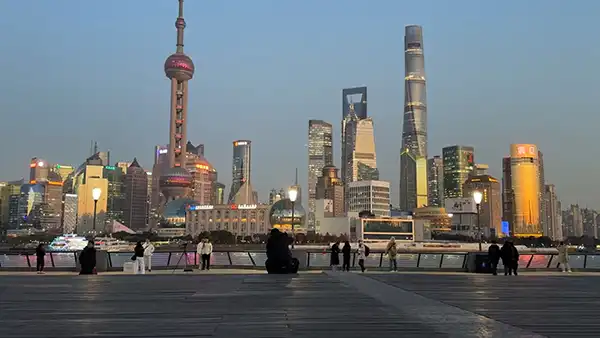Shanghai: A Symphony of Timeless Heritage and Futuristic Innovation
Nestled at the mouth of the Yangtze River, Shanghai stands as a dazzling metropolis where East meets West, tradition intertwines with modernity, and skyscrapers cast shadows over ancient waterways. As China’s financial and cultural powerhouse, this city offers travelers a kaleidoscope of experiences, from historic colonial architecture to cutting-edge art districts and serene natural escapes.
Historical Legacy: From Fishing Village to Global Port
Shanghai’s origins as a small fishing village transformed dramatically after the First Opium War (1839–1842), when it became a treaty port open to foreign trade. The Bund, a waterfront promenade along the Huangpu River, encapsulates this colonial past with its neoclassical and Art Deco buildings, once housing banks and trading firms from Britain, France, and beyond. Stroll here to witness the "World Architecture Expo," where Gothic spires and Baroque facades stand as relics of Shanghai’s "Oriental Wall Street" era.
For deeper historical immersion, visit the Hengfu Music Block in Xuhui District, a cultural hub blending 1930s Shikumen (stone-gate) houses with jazz clubs and art deco gardens. Nearby, Nie Er Green Space honors the composer of China’s national anthem, while Changshu Garden offers tranquil pathways lined with seasonal blooms.
The Yumatou Canal Culture Food and Leisure Block in Huai’an (Jiangsu Province) further showcases Shanghai’s connection to the Grand Canal, a UNESCO World Heritage site. Here, visitors savor Huaiyang cuisine—a culinary tradition celebrated for its delicate knife skills and light flavors—while exploring canal-side markets and intangible cultural heritage displays.
Modern Art and Urban Renaissance
Shanghai’s artistic pulse thrives in districts like West Bund, a former industrial zone reborn as a global art corridor. The Yuz Museum and Long Museum West Bund house contemporary masterpieces, while the West Bund Art Center hosts international exhibitions. Nearby, the Power Station of Art—a converted power plant inspired by London’s Tate Modern—showcases avant-garde installations, including works by Cai Guoqiang.
In M50 Creative Park, graffiti-covered warehouses host indie galleries and studios, reflecting the city’s grassroots art scene. For a fusion of tradition and innovation, Panlong Tiandi in Qingpu District merges Jiangnan water town aesthetics with modern amenities like equestrian centers and urban camping zones.
Natural Escapes: Parks, Wetlands, and Islands
Despite its urban sprawl, Shanghai surprises with verdant oases. Dishui Lake in the Lin-gang Special Area offers 8.4 kilometers of shoreline for kayaking, cycling, and lakeside picnics, while its stargazing-friendly Realm of Stars Sponge Park features interstellar-themed trails and wetlands.
The Shanghai Binhai Forest Park, with 75% forest coverage, invites hiking and barbecues amid towering trees. For a day trip, Chongming Island—China’s third-largest island—boasts migratory bird sanctuaries and organic farms, accessible via the Yangtze River Tunnel-Bridge.
Culinary Delights: From Street Food to Haute Cuisine
Shanghai’s food scene mirrors its multicultural DNA. Begin with xiaolongbao (soup dumplings) at Nanxiang Steamed Bun Restaurant in Yuyuan Garden, where delicate folds encase pork and hot broth. For street food, Huanghe Road sizzles with shengjianbao (pan-fried buns) and congyoubanmian (scallion oil noodles).
The French Concession offers refined dining: Lost Heaven serves Yunnan-inspired dishes in a colonial mansion, while Ultraviolet by Paul Pairet delivers a 20-course sensory spectacle. Don’t miss Xintiandi, where restored Shikumen houses host fusion restaurants and jazz bars.
Retail Therapy: Boutiques, Markets, and Luxury Malls
Shopaholics revel in Shanghai’s diverse retail landscape. Nanjing Road, one of the world’s busiest shopping streets, mixes century-old department stores like Shanghai No. 1 Department Store with global brands. For luxury, the Lujiazui Financial District boasts IFC Mall, home to Gucci and Prada, while the Xintiandi Style Mall curates avant-garde fashion.
Local artisans shine in Tianzifang, a labyrinth of boutiques in former French Concession alleyways, selling silk scarves and handmade ceramics. Meanwhile, AP Plaza at Shanghai Science and Technology Museum station offers quirky souvenirs, from Mao-era memorabilia to counterfeit luxury goods (bargain fiercely!).
Seasonal Travel Tips
The ideal time to visit is September–November, when temperatures (15–25°C) and golden foliage create perfect sightseeing conditions. Spring (March–May) brings blooming cherry blossoms in Gucun Park, though occasional rain requires layered clothing—think Uniqlo’s HEATTECH under a trench coat. Summer (June–August) is humid but ideal for indoor attractions like the Shanghai Natural History Museum, while winter (December–February) offers quieter streets and discounted hotel rates.
Cultural Festivals and Nightlife

Shanghai’s calendar bursts with events. Art Basel Shanghai (November) transforms galleries and warehouses into global art hubs, while the Mid-Autumn Festival lights up Yu Garden with lantern displays. By night, ascend the Shanghai Tower’s 118th-floor observatory for panoramic views, then dive into Bar Rouge on the Bund, where DJs spin against a backdrop of LED-lit skyscrapers.
In Shanghai, every corner tells a story—a city where junks glide past futuristic towers, where the scent of jasmine tea mingles with espresso, and where history and innovation dance in perpetual motion. Whether you’re tracing the footsteps of 1930s jazz legends or cycling through wetland parks, this metropolis invites you to write your own chapter in its ever-unfolding saga.